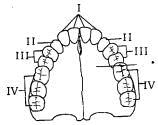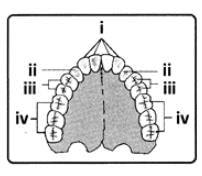Class 4 Exam > Class 4 Tests > Olympiad Test: Human Body -2 - Class 4 MCQ
Olympiad Test: Human Body -2 - Class 4 MCQ
Test Description
15 Questions MCQ Test - Olympiad Test: Human Body -2
Olympiad Test: Human Body -2 for Class 4 2025 is part of Class 4 preparation. The Olympiad Test: Human Body -2 questions and answers have been prepared
according to the Class 4 exam syllabus.The Olympiad Test: Human Body -2 MCQs are made for Class 4 2025 Exam.
Find important definitions, questions, notes, meanings, examples, exercises, MCQs and online tests for Olympiad Test: Human Body -2 below.
Solutions of Olympiad Test: Human Body -2 questions in English are available as part of our course for Class 4 & Olympiad Test: Human Body -2 solutions in
Hindi for Class 4 course.
Download more important topics, notes, lectures and mock test series for Class 4 Exam by signing up for free. Attempt Olympiad Test: Human Body -2 | 15 questions in 30 minutes | Mock test for Class 4 preparation | Free important questions MCQ to study for Class 4 Exam | Download free PDF with solutions
Olympiad Test: Human Body -2 - Question 1
Which of the following is not true for the care of teeth?
Detailed Solution for Olympiad Test: Human Body -2 - Question 1
Olympiad Test: Human Body -2 - Question 2
The blood flows to different parts of the body through:
Detailed Solution for Olympiad Test: Human Body -2 - Question 2
Detailed Solution for Olympiad Test: Human Body -2 - Question 3
Detailed Solution for Olympiad Test: Human Body -2 - Question 4
Detailed Solution for Olympiad Test: Human Body -2 - Question 5
Olympiad Test: Human Body -2 - Question 6
In the above diagram, the teeth marked III are also called:

Detailed Solution for Olympiad Test: Human Body -2 - Question 6
Detailed Solution for Olympiad Test: Human Body -2 - Question 7
Olympiad Test: Human Body -2 - Question 8
The outer portion of the tooth above the gum line is called:
Detailed Solution for Olympiad Test: Human Body -2 - Question 8
Detailed Solution for Olympiad Test: Human Body -2 - Question 9
Olympiad Test: Human Body -2 - Question 10
Which kind of teeth is well developed in herbivores?
Detailed Solution for Olympiad Test: Human Body -2 - Question 10
Olympiad Test: Human Body -2 - Question 11
How does digestion take place in the small intestine?
Detailed Solution for Olympiad Test: Human Body -2 - Question 11
Olympiad Test: Human Body -2 - Question 12
I touched a hot metal and immediately withdrew my hand from the metal. Why?
Detailed Solution for Olympiad Test: Human Body -2 - Question 12
Detailed Solution for Olympiad Test: Human Body -2 - Question 13
Detailed Solution for Olympiad Test: Human Body -2 - Question 14
Olympiad Test: Human Body -2 - Question 15
Which of the following does not happen when you breathe in?
Detailed Solution for Olympiad Test: Human Body -2 - Question 15
Information about Olympiad Test: Human Body -2 Page
In this test you can find the Exam questions for Olympiad Test: Human Body -2 solved & explained in the simplest way possible.
Besides giving Questions and answers for Olympiad Test: Human Body -2, EduRev gives you an ample number of Online tests for practice
Download as PDF





















